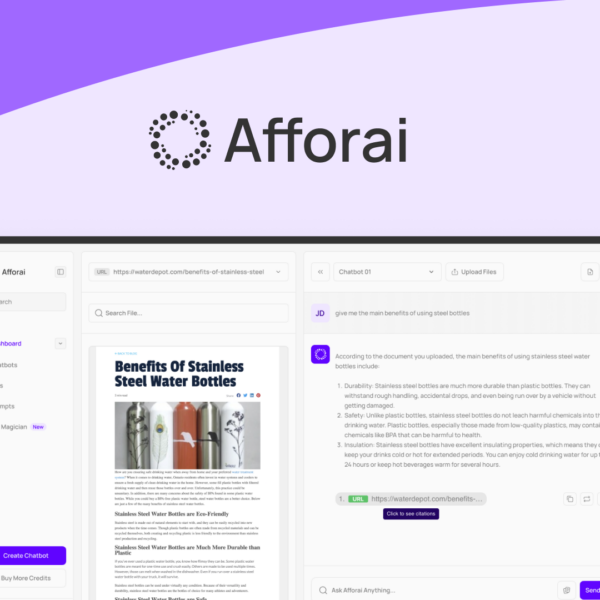Managing IT assets effectively is no longer just an option—it’s a necessity. In today’s tech-driven world, organizations rely heavily on computers, servers, and software. Yet, without a structured system in place, tracking these assets can quickly become a headache. Devices go missing, software licenses expire, and anomalies emerge that can cost businesses dearly. Let’s dive into how efficient IT asset management can save your organization time and money.
Importance of IT Asset Management
IT Asset Management (ITAM) is crucial for ensuring that an organization’s technology resources are tracked and optimized. By efficiently managing these assets, businesses can improve their overall productivity and reduce costs.
The importance of IT asset management can be broken down into several key areas:
1. Enhanced Visibility
With a robust ITAM system, organizations gain better visibility into their assets. This means knowing what assets are in use, their location, and their status. Enhanced visibility helps avoid unnecessary purchases and facilitates better planning.
2. Cost Savings
By keeping track of all IT assets, companies can reduce costs associated with over-provisioning or underutilizing resources. Effective asset management allows businesses to identify and eliminate waste, ultimately saving money.
3. Compliance and Risk Management
ITAM helps organizations stay compliant with software licensing and regulations. Non-compliance can lead to significant penalties. Effective asset management can identify potential compliance issues before they escalate.
4. Improved Decision Making
Having accurate data on asset performance enables better decision-making regarding upgrades, maintenance, and replacements. This insight allows businesses to plan future investments wisely.
5. Optimal Utilization
ITAM promotes the optimal use of resources. By analyzing the usage patterns of various assets, organizations can make informed decisions to redeploy or upgrade assets for maximum efficiency.
In summary, effective IT asset management is not just about tracking assets; it’s about leveraging them to enhance the organization’s productivity and success. With proper ITAM practices, businesses can position themselves for sustained growth and operational excellence.
Consequences of Poor Asset Tracking
![]()
Poor asset tracking can have serious consequences for businesses, especially in today’s fast-paced technology environment. When organizations fail to track their IT assets effectively, it can lead to a variety of issues.
1. Increased Costs
Organizations often face higher operational costs due to over-purchasing or under-utilization of assets. Without proper tracking, businesses may buy unnecessary equipment, leading to wasted resources and increased expenses.
2. Security Risks
Untracked assets can pose significant security threats. Devices that are not monitored may become vulnerable to theft or unauthorized access. This can expose sensitive company data and damage the organization’s reputation.
3. Inefficient Resource Allocation
A lack of visibility into asset usage can result in ineffective resource allocation. Companies may not know which assets are underused or may fail to redistribute assets where they are needed most.
4. Compliance Issues
Falling behind on software licensing and compliance can lead to severe penalties. Poor asset tracking often results in non-compliance with legal standards, exposing businesses to potential fines and legal challenges.
5. Decreased Productivity
Employees waste time searching for IT assets that are untracked or misplaced. This can lead to decreased productivity and can hinder the overall efficiency of operations within the organization.
In summary, addressing the consequences of poor asset tracking is vital to ensuring that an organization runs smoothly. Businesses must prioritize effective asset management to avoid these pitfalls and improve their overall operational success.
Best Practices for Managing IT Assets
Managing IT assets effectively is key to maximizing their value. Implementing best practices can help organizations improve their asset management processes and ensure optimal use of resources.
1. Maintain Accurate Inventory
Keeping an accurate inventory of all IT assets is crucial. Regularly update records to reflect changes such as new purchases or disposals. A well-maintained inventory reduces confusion and enhances visibility.
2. Implement Automated Tracking Tools
Using automated asset tracking software can streamline the management process. These tools help organizations track the location and usage of assets in real-time, reducing the risk of loss and improving accountability.
3. Regular Audits and Reviews
Conducting regular audits of IT assets is essential to verify their condition and usage. These reviews help identify underutilized assets that may be redeployed, as well as assets that need upgrading or maintenance.
4. Develop Clear Policies
Establishing clear policies for asset management is vital. Ensure that all employees understand their roles and responsibilities regarding IT assets. This can include guidelines on using, sharing, and maintaining equipment and software licenses.
5. Train Staff
Training staff on IT asset management best practices can enhance overall efficiency. Ensure that employees know how to use tracking tools, report issues, and follow asset management policies correctly.
6. Monitor Asset Lifecycles
Understanding the lifecycle of IT assets can help organizations plan for upgrades and replacements. Regularly assess the performance and condition of assets to determine when to retire or replace them.
7. Leverage Data Analytics
Using data analytics can help organizations make informed decisions about their IT assets. Analyze usage patterns to optimize resource allocation and identify trends that may require action.
By following these best practices, organizations can effectively manage their IT assets, reducing costs and increasing efficiency.
Tools and Software for IT Asset Management

Using the right tools and software for IT asset management is essential for optimizing resources and ensuring efficiency. Various solutions are available to help organizations track, manage, and maintain their IT assets effectively.
1. Asset Tracking Systems
Asset tracking systems provide real-time visibility into the status and location of IT assets. These systems help users easily monitor equipment, reducing the likelihood of loss or misplacement.
2. Inventory Management Software
Inventory management software allows organizations to maintain an accurate record of their assets. This software often includes features such as:
- Barcode scanning for quick data entry and updates.
- Reporting tools to analyze asset utilization and performance.
- Alerts and notifications for maintenance schedules or warranty expirations.
3. Configuration Management Databases (CMDB)
A CMDB is crucial for understanding the relationships between different IT assets. It provides a central repository that stores data about assets, their configurations, and dependencies, enabling better decision-making.
4. License Management Tools
These tools assist organizations in managing software licenses, ensuring compliance with licensing agreements. Key features include:
- Tracking usage and allocation of licenses.
- Monitoring expiration dates for renewals.
- Reporting on compliance status.
5. IT Asset Lifecycle Management Software
Lifecycle management software helps organizations manage the entire lifecycle of IT assets, from acquisition to disposal. This includes:
- Procurement: Streamlining the purchasing process.
- Maintenance: Scheduling regular maintenance and updates.
- Decommissioning: Safely disposing of or recycling old assets.
6. Cloud-Based Solutions
Cloud-based IT asset management solutions offer flexibility and scalability. They allow remote access to asset data and can integrate with other cloud services, enhancing collaboration and data sharing.
Investing in the right tools and software can significantly improve the management of IT assets, allowing organizations to operate more efficiently and effectively.
Case Studies: Success Stories in Asset Management
Examining case studies provides valuable insights into how effective asset management can lead to significant benefits for various organizations. These success stories highlight the ways businesses have streamlined processes and improved outcomes through strategic IT asset management.
1. Retail Company Success
A large retail company implemented an asset management system to track its inventory and store equipment. This led to:
- Improved inventory accuracy by 30% within the first six months.
- Reduced operational costs by optimizing stock levels.
- Enhanced customer satisfaction due to more reliable product availability.
2. Technology Firm Transformation
A technology firm faced challenges in managing its software licenses. After adopting a license management tool, they achieved:
- Compliance with software licensing agreements, avoiding costly penalties.
- Increased visibility into asset usage patterns, driving smarter purchasing decisions.
- Improved budget allocation based on actual software usage.
3. Educational Institution Optimization
An educational institute realized the value of asset management when it digitized its device tracking. The results were:
- Streamlined tracking of laptops and tablets for students.
- Enhanced security by reducing loss and theft through better monitoring.
- Increased accessibility of devices for students, promoting equity in learning opportunities.
4. Healthcare Provider Efficiency
A healthcare provider utilized an IT asset management system to keep track of important medical equipment. This led to:
- Reduced downtime for critical equipment, improving patient care.
- Efficient scheduling of maintenance, lowering unexpected repair costs.
- Increased accountability among staff regarding equipment usage.
These case studies illustrate that effective IT asset management not only enhances efficiency but also contributes to significant operational improvements across various sectors.




